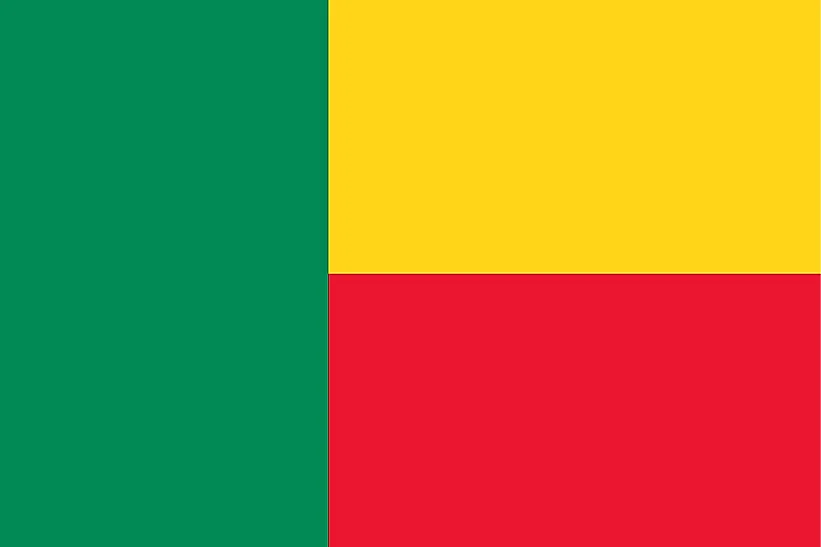
ベナン
| 大陸 | アフリカ |
| 資本金 | ポルト・ノーヴォ |
| 人口 | 10,741,458 |
| GDP | $24.31億ドル |
| 一人当たりGDP | $2,200 |
| ダイヤルコード | +229 |
| ISOコード(2文字) | ブロウジョブ |
| ISOコード(3文字) | ベン |
ベナンについて
歴史的意義と文化的伝統が豊かな西アフリカの国、ベナンへようこそ。11万4,763平方キロメートルの国土に約1,200万人が暮らすベナンは、ヴォードゥン(ブードゥー教)発祥の地として古くから受け継がれてきた遺産と、近代的な開発への願望を兼ね備えています。ギニア湾からニジェール川にかけて広がるこの旧フランス植民地は、安定した民主主義国家として、また西アフリカの文化大国として台頭してきた。
地理的特徴と自然の美しさ
ベナンの地形は、南部の海岸平野から北部のなだらかなサバンナ高原へと移り変わる多様な景観を呈している。南部の121キロの海岸線にはヤシの木が生い茂るビーチやラグーン、湿地帯がある一方、北部には標高641メートルのアタコラ山脈があり、ドラマチックな風景が広がっている。
北部の国境をなすニジェール川やウエメ川など、重要な河川にも恵まれている。西アフリカ有数の野生動物保護区であるペンジャリ国立公園には、ゾウ、ライオン、カバ、カモシカなどが生息している。
ベナン南部最大の湖であるノクエ湖には、"アフリカのベニス "と呼ばれる高床式住居で有名なガンヴィエ村がある。ベナンの気候は海岸沿いの熱帯から北部の半乾燥まで様々で、豊かな生物多様性を支える多様な生態系を形成している。
文化遺産と伝統
ベニスの文化は古くからの伝統に深く根ざしており、特にヴォドゥン教はこの地方で生まれ、世界中の精神修養に影響を与えている。ウイダ市はヴォドゥン信仰の中心地であり、毎年ヴォドゥン・フェスティバルが開催され、世界中から観光客が訪れる。
この国の芸術的伝統は、歴史的なダホメー王国の有名なブロンズ鋳造品、アボメーの複雑なアップリケ布、活気に満ちた伝統音楽と舞踊に代表される。ユネスコの世界遺産に登録されているアボメイの王宮では、ダホメー王国の驚くべき建築と芸術的成果を見ることができる。
伝統音楽はベニスの文化において重要な役割を担っており、アンジェリーク・キジョーのようなアーティストがベニスの豊かな音楽遺産に国際的な注目を浴びせている。料理はさまざまな民族の影響を受けており、アミウォ(とうもろこしの粉で作ったパン生地)やアラキドソース(ピーナッツソース)などの料理がベナン全土で親しまれている。
歴史の旅
ベナンの歴史は、強力な王国、特に17世紀から19世紀にかけて栄えたダホメー王国によって特徴づけられる。この王国は、その軍事力と洗練された政治システムで知られ、残念なことに、ウイダ港を通じた大西洋横断奴隷貿易の役割を担っていた。
1894年にフランスの植民地となり、1960年にダホメーとして独立、その後1975年にベナンに改名した。政治的に不安定でさまざまな形態の政権が続いたが、1991年に民主主義に平和的に移行し、アフリカで最も安定した民主主義国家のひとつとなった。
現代の経済状況
現在のベナンは、農業、地域貿易、サービス業を中心に経済成長を遂げている。綿花はベナンの主要輸出作物であり、コトヌー港は特に隣国ナイジェリアとの貿易拠点として機能している。
政府は経済の多様化と投資誘致のための改革を実施し、デジタル技術、観光、農産物加工に力を入れている。また、インフラ整備や教育振興でも大きく前進した。
国際関係とグローバルポジション
ベナンは地域機関や国際機関に積極的に参加し、ECOWAS(西アフリカ諸国経済共同体)やアフリカ連合を通じて西アフリカ問題で建設的な役割を果たしている。民主主義の安定と文化外交で尊敬を集めている。
ご存知でしたか?
- ベナンはヴォドゥン(ブードゥー教)発祥の地とされ、同国では正式な宗教として認められているが?
- ミノ族として知られるダホメーの有名なアマゾンの戦士たちは、『ブラックパンサー』に登場する架空のドーラ・ミラージュのインスピレーションの源となった?
- ウイダ市には、奴隷として強制連行された人々の記念碑「帰らざる扉」がある。
- ベナンは西アフリカで最も識字率の高い国のひとつであり、教育への投資も大きい。
結論
ベナンは、国家がいかにして豊かな文化遺産を守りつつ、近代的な発展を受け入れることができるかを示す試金石となっている。古代の王国から活気に満ちた民主主義、伝統的な精神修養から現代アートシーンまで、ベナンはアフリカの歴史とその未来の可能性を垣間見ることができる魅力的な国です。発展と成長を続けるベナンは、持続可能な開発と地域協力を追求しながら、その文化的アイデンティティを維持することに全力を注いでいる。





